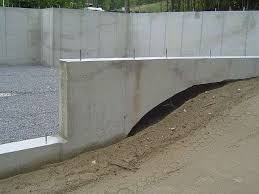If Finishing Your Basement Consider Waterproofing Basement Walls and Floors
By Mark J. Donovan
|
|
Waterproofing basement walls and floors is important whether you are planning to finish your basement or just using it mainly for storage. Basements are notorious for having high moisture levels, and left unchecked mold and mildew will quickly grow.
High basement moisture levels include both high moisture vapor levels, and literally standing puddles of water. A well thought out and implemented waterproofing basement system can dramatically reduce both forms of basement moisture. |
Moisture vapor enters the basement through both the basement walls and floors. Once it hits the cold surfaces of cold water pipes and water-holding tanks the moisture condenses into water. Frequently you can observe this fact during summer months by seeing puddle lines of water on the basement floor. Water can also enter a basement in liquid form by finding its way through cracks in the basement walls and floors.
Waterproofing Basement Floors
If building a new home, install a layer of plastic over the crushed stone before the concrete floor is poured. This will help to reduce the amount of moisture pushing up through the concrete floor.
| Apply a concrete patching compound or hydraulic cement sealer around the perimeter of the concrete floor, next to the basement walls, to seal potential leaks. Then apply a basement water sealer to the basement floor.
Again, if there is significant water seepage via the basement floor, it may be necessary to dig around the outside basement walls and install a French perimeter drain system and apply a water sealer to the outside basement walls. Gutters should also be installed if water is running off of the roof and onto the ground near the basement walls. |
 |
Other Waterproofing Basement Tips
Wrap all cold water pipes with a plastic foam pipe wrap and seal the cracks and seams with electrical tape. Make mitered cuts (45o angles) with the foam pipe wrap to ensure tight connections.
Also wrap the well water storage tank with a plastic blanket wrap to eliminate sweating. Again, tape all seams.
Install a dehumidifier in the basement. A dehumidifier can dramatically reduce the moisture vapor levels within the basement.
For more help on Basement Additions, see HomeAdditionPlus.com’s Basement Remodeling Bid sheet. The Basement Remodeling Bid Sheet will help ensure that your hire the right contractor so that your basement remodeling project is done correctly and you get the project finished on time and budget.
Related Information
- Estimating the Cost of Finishing a Basement
- Important Finishing Basement Considerations
- Insulating Foundation Walls
Get Free Basement Remodeling Price Quotes with No Obligation!
Fill out our 3-5 minute quick and easy form, and receive a free price quote on basement remodeling from one of our prescreened and licensed basement remodeling contractors. This process is free and there is no obligation to continue once you receive your basement remodeling price estimate.

